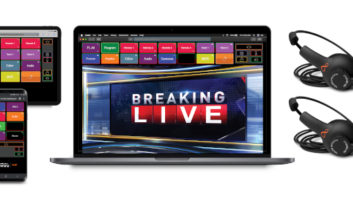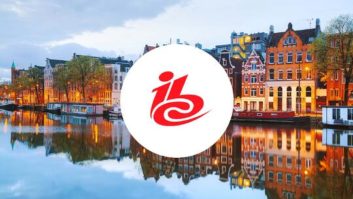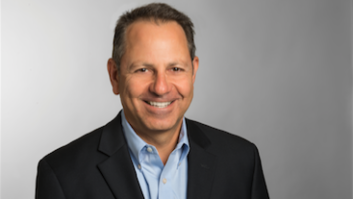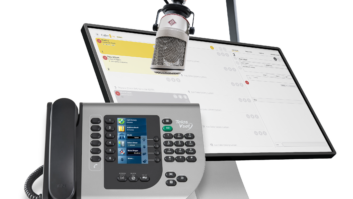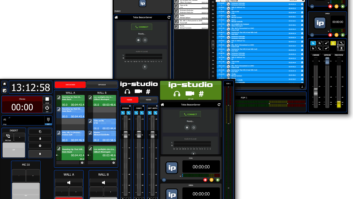IBC2019 is almost here. Between now and then Radio World will conduct several short Q&As with manufacturers about their plans and offerings, to help you get the most out of the big annual trade show. Frank Foti is the founder of Omnia Audio, now a part of the Telos Alliance and is executive chairman of The Telos Alliance; Tom Swidarski is CEO of the Telos Alliance.
Radio World: How has business been for the company since last year’s IBC Show?
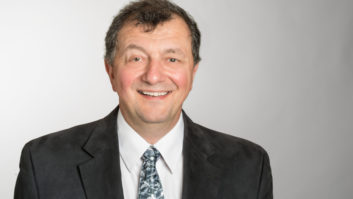 Frank Foti: Business has been up for us across the entire portfolio. AoIP continues to grow as it migrates deeper into other sections of broadcast, especially television.
Frank Foti: Business has been up for us across the entire portfolio. AoIP continues to grow as it migrates deeper into other sections of broadcast, especially television.
Tom Swidarski: Broadcasters who have held out are starting to realize that there is no time like the present to convert to IP infrastructure. We invented broadcast AoIP, so we’ve got the most mature technology available on the market today, and the biggest names in broadcast trust us. This drives business. Our successes are also attributable to the increased alignment in our sales, marketing and product development teams. We’ve debuted a new product introduction process that decreases our time to market and we’ve standardized the manufacturing process. The result is a nimbleness that lets us both lead the industry in innovation and respond quickly to the evolving audio landscape. You’ll see that evidenced by the amount of new product introductions to the international market at IBC this year.
RW: What are you hearing from your customers about their business outlook this year? In what areas should we expect growth or the most interesting projects?
Foti: Well, it’s a multipronged dialog really. On one hand, we’re reconnecting with companies who reorganized for various business reasons. And on the other hand, we’re in deep discussions about platform migration and paradigm shifts. It’s exciting, and what we once saw as potential is now reality. For growth, the action is network and cloud-based.
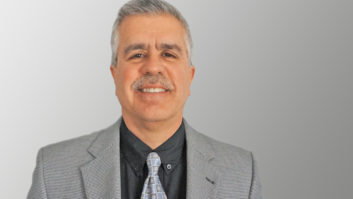 Swidarski: Another challenge is the fierce competition for the ear. Our clients have to be wherever their customers are and embrace the ways in which their listeners consume content. They have to be ready to change course on a dime, and are realizing the advantage of being able to choose products from various vendors to “roll their own” systems. This underscores the critical importance of interoperability and manufacturer as a partner. For our part, we’re helping clients through these transitions by moving toward software, automated solutions, and virtualization.
Swidarski: Another challenge is the fierce competition for the ear. Our clients have to be wherever their customers are and embrace the ways in which their listeners consume content. They have to be ready to change course on a dime, and are realizing the advantage of being able to choose products from various vendors to “roll their own” systems. This underscores the critical importance of interoperability and manufacturer as a partner. For our part, we’re helping clients through these transitions by moving toward software, automated solutions, and virtualization.
RW: Within the last year or so the two large station ownership groups have emerged from bankruptcy. Are you seeing any increase in equipment sales or interest? What is your feeling for the overall health of the radio industry?
Foti: We sure do live in interesting times! It’s a good step forward when those companies are able to emerge from their challenges, and kudos to their teams for doing so. That’s not easy work. Those companies’ interest in our offerings was always there, and now we’re fortunately catching up on the business side with them. As for the health of the radio industry, we know it has a pulse!
Swidarski: The term “radio” used to be reserved for analog, terrestrial, over-the-air delivery. That model is still valid, alive, and well, but radio is evolving and diversifying into digital terrestrial delivery, streaming, and on-demand content. The popularity of smart speakers — the new table radio — is testament to this, as is the continued increase in podcast listenership. The good news is that radio is going through a renaissance, and the demand for audio content has never been higher. Our customers are producing quality and a large quantity of content like never before, and they are looking to companies that understand their evolving needs and pain points and who respond to them with innovative solutions. The broadcasters with the best tools and the most forward-thinking strategies and facilities are going to prosper.
RW: You’ve been active in the equipment manufacturing market for years. What’s the biggest problem or challenge facing manufacturers right now? Does the trade row between the United States and China greatly affect you?
Foti: The goofiness between the U.S. and China has had a bit of impact. It’s unfortunate to see the leaders of these great nations act so childishly. (We sure could use Tony Soprano here.) Actually, there’s always some challenge in our world — components have life cycles that end, manufacturing schedules change, research/development can be a wildcard, and day-to-day business is as dynamic as an audio processor. We are used to being flexible and responsive enough to react to these challenges quickly and directly, leaving things for the most part, business as usual.
RW: What new goodies will your company be showing? Why should attendees visit your stand?
Swidarski: In Stand 8.D47 we’re again focusing on solutions rather than products, and thinking of customers as partners. Content is content, despite delivery method (whether it’s a podcast, radio, TV, or streaming), and our goal at TA is to inspire broadcasters to create the most exciting audio experiences imaginable.
Foti: Well, if I told you, I’d have to kill you. There is indeed some stellar news that will be revealed on Day One of the show from Axia at our press conference. In addition to that, we’ll have the new Omnia MPX Node running in the stand. It’s the first hardware implementation that carries FM-Stereo MPX over IP at a bitrate as low as 320 kbps. We’ll have tons of new TV products, as well as a host of cool stuff for the growing Infinity IP Intercom platform, including Infinity Link site-to-site connectivity. It’s going to be a big show for us!
RW: Going by the interest on our website, AoIP technology is on the top of the list for product acquisition and upgrades. Is that something you are seeing and if so, how are you addressing that?
Foti: What you’re seeing in interest is on point. It is the hot topic. For those not working in the IP ecosphere, their days could be numbered.
Swidarski: Having brought this technology to the broadcast market, The Telos Alliance always has and will continue to be AoIP’s biggest champion. It’s one of our key pillars.
RW: What do you anticipate will be the most significant technology trend at the 2019 IBC Show?
Foti: Cloud, IP and web-based applications and products.
Swidarski: That’s right. The march towards virtualization in the broadcast industry continues each year with automation systems, call management software, and streaming processing offered with great flexibility. Virtualization is particularly possible with the wide adoption of audio over IP. Because AoIP converts audio signals into IP packets, it’s perfectly suited for routing and processing within virtual environments. Our own march to virtualization comes in the form of what we call the “Hyperstudio Experience,” which will be demoed in our booth again this year. We have virtualized streaming processors, AoIP AES67 audio drivers, phone hybrids, automation and control logic systems, remote control and mixing applications, and entire mix engines that could be used as a single Virtual Radio Production System. This could be deployed on a local server, external server, or used in conjunction with the cloud, creating a production environment that is scalable, adaptable, flexible, and future-proof while enjoying all of the sonic benefits that its rackmount counterparts are so well known for. Within a business model that makes it affordable by organizations large and small.
RW: Will you be attending any sessions or looking forward to any events?
Foti: We always look forward to the reaction of our clients as we share new offerings, but also like to lead with education. We’ll participate in the IP Showcase, where Martin Dyster will be leading “Reinventing Intercom with SMPTE 2210-30” on Sept. 14 at 2:30. Greg Shay will also be talking about “Investigating Media Over IP Multicast Hurdles in Containerized Platforms” on Sept. 15 at 3:30. We look forward to catching up with everyone at our press conference and reception on Sept. 13, 4:00 at stand 8.D47. Drinks and snacks will be at the ready after a long day on the show floor!
RW: You’re a show veteran, how has the show changed since your first visit?
Foti: IBC, like NAB, is a fraternity. A place to connect, network, share and gather information, and enjoy the comradery of those in our industry. In that regard, not much has changed, aside from those who’ve moved on or changed positions.
Swidarski: I agree. I’ve been in the industry a couple of years now, and I’m continually impressed with the spirit of the broadcast industry.
[Subscribe to our newsletter and get it delivered right to your inbox.]






